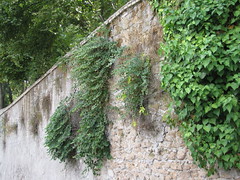I think a brief follow-up to yesterday’s foray down Memory Lane might be in order, lest you all go away thinking that I’ve lost my marbles. So, yes, according to Ramnath’s comment I was right, the large, global collection of jute assembled at the Bangladesh Jute Research Institute starting in the 70s did indeed receive a sort of blessing from IBPGR (the International Board for Plant Genetic Resources) in the late 1980s when it became part of the Global Network of Base Collections. It wasn’t on the list in 1985. But it had made it by the time of the IBPGR Annual report for 1989. I know that because googling threw up a link to the paper “Plant Genetic Resources Activities: International Perspective” by R.K Arora, R.S. Paroda and J.M.M. Engels, and that includes a handy table. Alas, that link, which should take one to Bioversity International’s (that’s what IBPGR became) website, is broken. Fortunately, the cache is there, at least for a while, and I have been able to save the paper as a pdf for you.
We don’t hear much about the Global Network of Base Collections any more. It would be interesting to know if the Bangladesh Jute Research Institute still feels itself to be part of it. I suspect not. Of course, things have changed a lot since 1989. But what’s to stop BJRI proposing to place its collection under Article 15 of the International Treaty on PGRFA? Others have…
And as for that IBPGR-funded collecting for Corchorus in Kenya that I could find no evidence of before, that must have been because I was searching for it incorrectly. My mole at the Collecting Missions Files Repository was able to identify it pretty quickly. 1 For the record, the missions took place in 1987-1988, under the leadership of I.R Denton of the International Jute Organization. And the material is still being used, as searching for that name in Google Scholar can tell you. But here’s how the source of material from those expeditions is being described in a fairly recent paper:
All the materials were obtained through the courtesy of the Director, Central Research Institute for Jute and Allied Fibers, Barrackpore, India, from the IJO world collection.
So people still recognize a “global jute collection,” but is it now located at the Central Research Institute for Jute and Allied Fibers, Barrackpore, India? Time for some further sleuthing, I guess.
